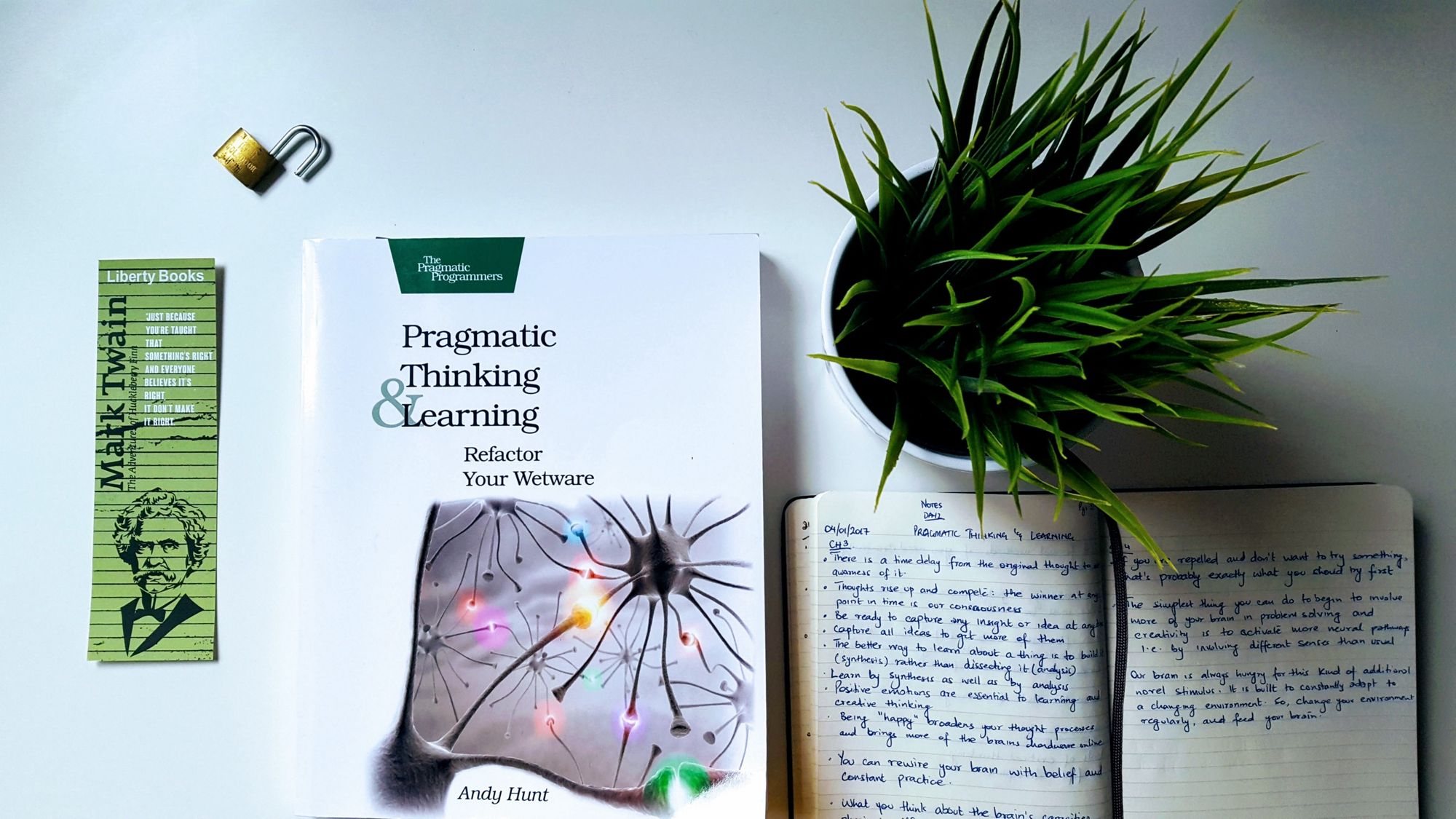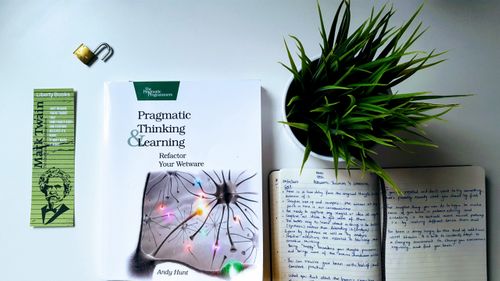
The following is an edited version of an article I wrote a couple of years ago.
Andy Hunt’s book Pragmatic Thinking and Learning is an excellent read for anyone — especially, in my opinion, writers.
Here’s why.
Hunt describes what he calls “L-mode” and “R-mode” of mental processing. Each has a role and neither should be ignored.
L-mode is the one we easily use on a regular basis. R-mode deals with a more holistic understanding of things.
An example of L-mode thinking would be to quickly memorise a list of things. L-mode is deliberate, all business minded. An example of R-mode thinking would be to simply read and absorb things, an undeliberate getting in the zone kind of wandering about, without focussing on conscious learning. Just letting it sink in.
But R-mode can make us uncomfortable. We tend to neglect it.
What does this mean for writers?
L-mode is great for your revision phase. For your grammar and spelling checks. For your editing. For nagging you into polishing your piece of writing the best one ever.
For creativity? Not so much.
In fact, I believe L-mode is the main reason behind writer’s block. It demands the first draft be perfect BEFORE it’s even come into existence. You look at your blank page and it’s already telling you what you’re going to put on it is rubbish.
On the other hand, R-mode is the wellspring of unfettered creativity. It ticks away quietly in the background, solving problems and connecting dots, recognising patterns, remembering things your conscious mind didn’t even know you’d noticed.
The R-mode might ALREADY have the answer to what you’re trying to solve. Maybe you’re trying to get your character to follow a plot point. Your R-mode might already know why the character would NEVER do what you want her to, because it’s just not the character’s nature. Maybe you came up with the character while you were in R-mode, just before you went to sleep, from a daydream, or after you just woke up. Then you decided to place this real character in the middle of a plot you came up with on L-mode.
R-mode probably knows your character better because it gave you the character in the first place, but then you let your L-mode take over and push it aside.
But how to access it? R-mode is non-verbal. What it gives us is in imagery. In moods. In feelings. In scenes. In dreams, even.
Hunt says it IS possible to get your R-mode into action. It requires luring it out into the light (not ordering it to — that doesn’t work). It requires putting the L-mode to sleep.
After which you can do what Hunt calls
“harvesting your R-mode’s preconscious treasures.”
Here are just a few ways Hunt’s book suggests we access this creativity-friendly part of our brain.
Write Regularly.
Small blog posts, article writing, bits of the story you’re working on — all in first draft form. Bring them out without censoring them.
Regular, persistent writing at a set time each day trains the brain. It let’s it know there’s a set time for creativity.
In doing this, you’re practicing active silencing of the L-mode. Once you quench it firmly a good few times, it will eventually catch on that it’s not wanted at that particular time each day.
Write “Morning Pages.”
Hunt recommends three pages each morning. Even if it’s gibberish! It all works towards making you progressively better at reaching your own mind. As soon as you wake up, before doing anything else, grab a pen and start writing. This is the time when your R-mode is at its strongest. You’re just stepping onto the threshold of being fully conscious. You’re least liable to censor yourself. Just like in the dream world where your subconscious lets loose, not caring about how appropriate its being, not shrinking from whatever truths are pestering you.
Really, the secret behind this is to let go of perfection or of anything like standards. It can be as simple as typing surreptitiously on your Google Keep app in the dark a few minutes before the baby wakes.
Walk - or a repetitive activity
That going on a walk helps bring the mind to problem solve in R-space isn't news to writers. It's great news for people like me who spend most of their life vacuum cleaning or folding or scrubbing something or the other.
Andy Hunt postulates it’s because when doing a repetitive relaxed activity, the L-mode gets bored. It likes being challenged. Walking, using a treadmill, washing the dishes, taking a shower, tricks it into shutting itself off. Allowing the R-mode to take over.
Change the perspective.
Imagine your story from the viewpoint of a character you haven’t considered before. Maybe even write a scene or two from that person’s perspective. Hunt talks about the benefits of “whacking” your brain into seeing problems from a different position, through perhaps a more clear lens. It might open up solutions you hadn’t seen before.
Carry a notebook.
Hunt writes,
“Since memory is a frail and expensive mechanism, be prepared to write down the gems of insight that your R-mode may deliver, whenever — and wherever — that may be.”
Jotting it down in an app can suffice as well.
Don’t assume there’s only one right answer.
This will disarm some of your writer’s anxiety and allow you to mess around.
While this book isn't marketed specifically to writers, it does contain quite a few useful takes into the process.

